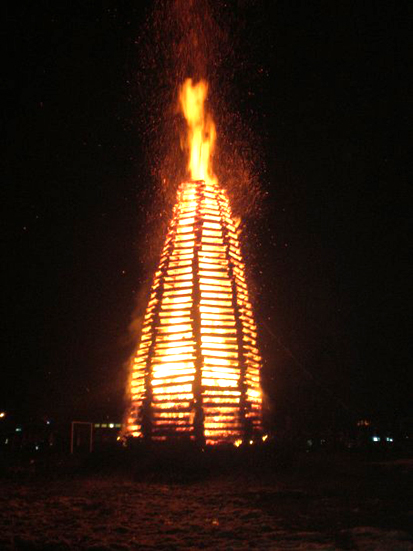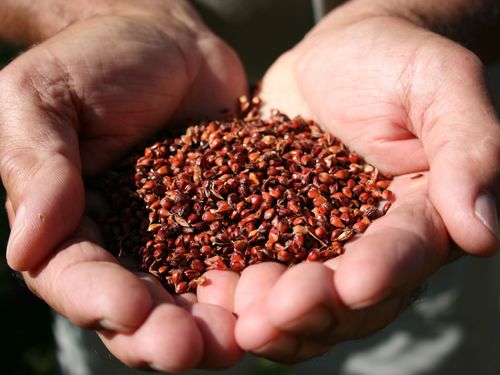Bonfire Sunday
Social practices in Vorarlberg, inscribed 2010
Bonfire Sunday ("Funkensonntag") is the first Sunday following Ash Wednesday and thus stands at the beginning of Lent, just after the end of the Carnival ("Fasnacht") period. As early as Fat Tuesday, the bonfire fir ("Funkentanne")—which, in some places, can be up to 30 metres high—is cut down. The construction of the bonfire ("Funken") itself begins on the Saturday immediately prior to Bonfire Sunday, with all of the materials collected by the bonfire guilds ("Funkenzünften") and volunteer helpers over the preceding weeks being piled up to form a tower-like structure. Traditionally, the bonfire is only lit when darkness sets in.
The Sunday following Ash Wednesday witnesses bonfires that mark the end of the completed carnival season (Alte Fastnacht) in communities all across Vorarlberg. Dornbirn, the province’s largest municipality, boasts a multitude of bonfires put on by various bonfire guilds. And in communities that have no dedicated bonfire guilds of their own, the necessary tasks are carried out by the local fire brigade or local carnival guilds (Fasnachtszünfte). Children and adolescents get involved in the tradition of Bonfire Sunday by way of youth bonfires held specifically for them that usually burn in the afternoon. And at age 17, the adolescents can go on to participate in the regular bonfire guilds, where they learn the techniques necessary for the practice of this tradition.
The idea that the burning of the spark is a relic of a pagan spring cult persists, although it cannot be scientifically proven. Bonfire Sunday has undergone many changes over the course of history. Its current form dates back to the 19th century. In any case, the bonfire provided and still provides an opportunity to burn the garbage that accumulates during the spring cleaning of houses and yards. The collected Christmas trees are also put on the bonfire. The burning of a (straw) doll - usually with a female connotation - refers to the end of carnival. For over two decades, there has been widespread discussion in Vorarlberg as to whether it is appropriate to burn a human, usually female, figure on the bonfire in light of the historical burning of witches. In response to this, some carnival guilds have started to use non-human figures and symbols.
Downloads
- Application form (in German only) 66 KB (doc)
- Two poesm by poet Armin Diem (in German only) 23 KB (doc)
- Expertise Beitl (in German only) 358 KB (pdf)
- [Translate to EN:] Expertise Berger 149 KB (pdf)
[Translate to EN:]


![[Translate to EN:] © J. Ségur/ZED, with the permission of UNESCO](/fileadmin/_processed_/d/b/csm_Convention-2003-IKE_0832a6a47d.jpg)
![[Translate to EN:] © ÖUK](/fileadmin/_processed_/3/9/csm_P1011318_7eac86402f.jpg)

![[Translate to EN:] © Weitblickfilm](/fileadmin/_processed_/9/8/csm_Workshop_17_2dee1e1fd8.jpg)